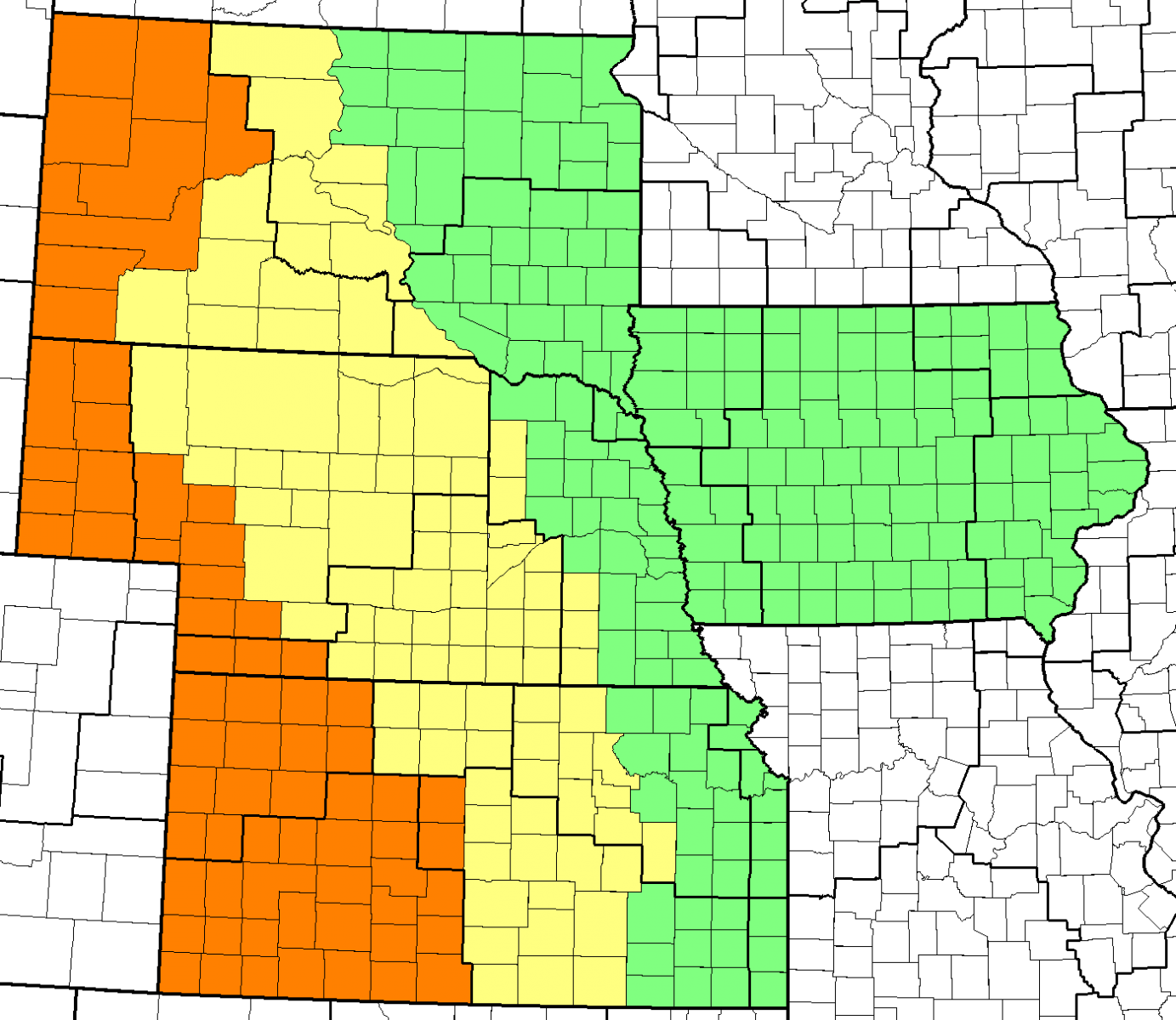Q: What is the Grassland Fire Danger Index (GFDI) ?
A: It is an index that describes the rate of spread of a grass fire (and therefore the difficulty of putting it out.) The index was developed in Australia and has been adapted for the Great Plains. It is based on a combination of the “greenness” of the grass, and various meteorological parameters. The higher the index, the faster a grass fire will spread.
Q: What goes into the GFDI calculations?
A: The weather parameters (listed in decreasing order of importance) are wind, wind gusts, relative humidity and temperature. However, the biggest single factor is “curing.” Curing is a measure of how green or brown is the grass. The curing value of green grass is 0, and completely brown grass is 100. To spread rapidly, there has to be fuel, and completely cured grass is an excellent fuel. Conversely, green grass does not burn easily, regardless of wind or relative humidity.
Q: What do the GFDI numerical values mean, or what is a high number?
A: The table below gives the resultant suppression impacts of various GFDI values.
| GFDI Value | Impact on Suppression |
|---|---|
| 0-4 | Head fire is stopped by road and tracks. |
| 5-9 | Head fire attack is easy with water. |
| 10-19 | Head fire attack is generally successful with water. |
| 20-39 | Head fire attack will generally succeed at this index. |
| 40-49 | Head fire attack may fail except in favorable circumstances and close back burning to the head may be necessary. |
| 50+ | Direct attack will generally fail. Back burn from a secure good line with adequate personnel and equipment. Flanks must be held at all costs. |
Q: What do the GFDI categories mean?
A: The GFDI categories are derived from the numerical GFDI values. These categories have been scaled based on climatology at the request of our fire weather partners. The extreme category threshold is the numeric value that is exceeded on the highest five percent of days for a given area. The catastrophic category threshold is the numeric value that is exceeded on the highest one percent of days for a given area.
Q: Is there a relationship between Red Flag Warnings and GFDI?
A: Red Flag Warnings are typically issued for extreme or catastrophic GFDI categories, since fire weather partners requested Red Flag Warnings for the five percent worst fire days each year. However Red Flag Warnings may also be issued at lower values at the request of fire weather partners.
Q: How are the categories determined when the GFDI (numeric) values vary across a county?
A: The category is based on the 60th percentile of the maximum values over the time range. In detail, we determine the highest GFDI value at each grid point over a given time range. We then find the 60th percentile value, i.e., 60 percent of the county is less than this value and 40 percent is higher. This number is then converted to a category which is assigned to the entire county.
Q: What is the relationship between numerical GFDI values and categories?
A: This varies depending on the type of grass and climatology. Our fire weather partners requested that Red Flag Warnings be issued for the worst five percent of days each year. After analyzing nearly a half million historical GFDI observations across the plains, we found that the geographical climatology of GFDI values is similar (although not exact) to the distribution of prairie grass types:

The extreme category threshold was adjusted to reflect the threshold of the highest five percent GFDI values and the catastrophic category to the threshold of the worst one percent. Lower categories were scaled proportionally.
| Scale | Shortgrass Prairie | Mixed Prairie | Tallgrass Prairie |
|---|---|---|---|
| Low-Moderate | 0-8 | 0-7 | 0-6 |
| High | 9-23 | 8-19 | 7-15 |
| Very High | 24-59 | 20-49 | 16-39 |
| Extreme | 60-99 | 50-79 | 40-59 |
| Catastrophic | 100+ | 80+ | 60+ |
Q: We had a big fire and the GFDI category was less than extreme (or a Red Flag Warning was not in effect). What is up with that?
A: It is possible to have large grass fires with moderate, high or very high GFDI categories. Remember the GFDI is an index of the rate of spread of the fire not the size. If the fire is in a remote area, it may take longer for the fire to be reported and/or to get sufficient personnel and equipment on scene to extinguish it. In either case, the longer time the fire burns, the bigger the area affected. Of course it is also possible that the forecast of one or more weather parameters was incorrect.